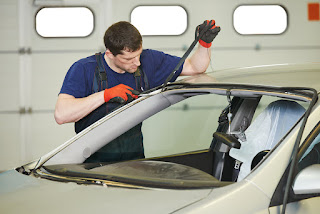Understanding Why Cold Weather Causes Cracks and How to Prevent Them
As winter approaches and temperatures drop, many of us brace ourselves for the challenges that come with the cold weather. From bundling up in layers to preparing our homes for the frosty onslaught, there's a lot to consider. But amidst all the hustle and bustle, one aspect that often gets overlooked is the vulnerability of our vehicles' windshields.
It's a scenario familiar to many: you wake up on a chilly morning, head out to your car, only to discover a dreaded crack snaking its way across your windshield. But why does cold weather seem to have such a knack for causing these cracks? And more importantly, what can be done to prevent them? Let's delve into the science behind this phenomenon and explore some practical tips for safeguarding your windshield.
Understanding the Culprit: Temperature Fluctuations
The primary culprit behind windshield cracks in cold weather is the significant temperature fluctuations that occur, especially during the transition from warm to cold and vice versa. When your car is left out in the cold overnight, the glass contracts and becomes more brittle. Then, when you start your car and turn on the heater or defroster, the sudden influx of warm air causes rapid expansion in the glass. This expansion, coupled with the inherent stress already present due to the contraction from the cold, can lead to cracks.
Additionally, if there are existing imperfections in the windshield, such as tiny chips or scratches, these areas become vulnerable points where cracks are more likely to originate and spread.
Preventive Measures: How to Safeguard Your Windshield
While you can't control the weather, there are steps you can take to minimize the risk of your windshield succumbing to cracks in cold weather:
Park Indoors or Use a Windshield Cover: Whenever possible, park your car indoors or in a sheltered area to protect it from extreme temperature fluctuations. If indoor parking isn't an option, consider using a windshield cover or even a thick blanket to shield your windshield from direct exposure to the cold.
Avoid Sudden Temperature Changes: Be mindful of sudden temperature changes when starting your car on cold mornings. Instead of blasting the heater at full force, gradually increase the temperature to allow the glass to acclimate more gradually to the change in temperature.
Repair Chips and Cracks Promptly: If you notice any chips or cracks in your windshield, don't ignore them. Even minor imperfections can weaken the structural integrity of the glass, making it more susceptible to cracks in cold weather. Contact a professional auto glass repair service to address any issues promptly.
Use Caution When Defrosting: When using your car's defroster, avoid directing hot air directly onto a cold windshield. Instead, aim the airflow toward the base of the windshield and gradually increase the temperature to prevent thermal shock.
Invest in Quality Windshield Glass: If you're in the market for a new windshield or need a replacement, opt for high-quality glass that's specifically designed to withstand temperature fluctuations and resist cracking.
By taking these preventive measures, you can help protect your windshield from the ravages of cold weather and minimize the risk of costly repairs or replacements down the road. Remember, a little proactive maintenance goes a long way in ensuring your windshield remains clear, safe, and crack-free, no matter how low the temperatures drop outside. Visit website for more.


Comments
Post a Comment